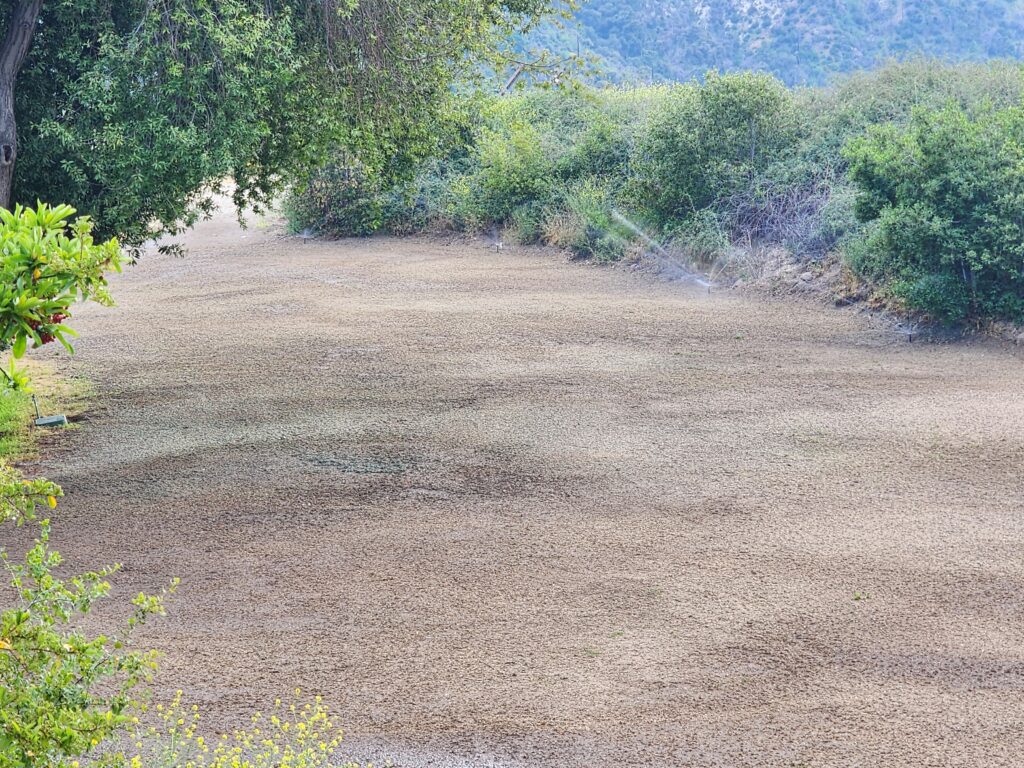Proper watering is key to success after Hydroseeding
Once you’ve completed the hydroseeding process, it becomes imperative to closely monitor the moisture levels of your freshly seeded area. Ideally, aim for daily checks to ensure consistent hydration. However, if this frequency is not feasible due to time constraints or other factors, conducting inspections every 3, 7, or 14 days can still effectively gauge moisture levels and address any watering needs.
During your inspections, pay close attention to any areas that appear lighter in color compared to their surroundings. These lighter patches are indicative of dryness and may signal a lack of sufficient moisture for germination and growth. Conversely, darker areas typically signify adequate moisture levels, suggesting that those sections are receiving the necessary hydration.
In addition to assessing color variations, be on the lookout for any puddles that persist for more than a day. Prolonged puddling can indicate potential issues with your sprinkler system, such as uneven coverage or improper timing, which may necessitate adjustments to ensure uniform watering and prevent overwatering or underwatering.
Furthermore, it’s essential to recognize that weather conditions play a significant role in determining watering needs. Periods of intense heat or heavy rainfall can drastically alter soil moisture levels, impacting the hydration requirements of your newly seeded area. In response to these weather fluctuations, consider modifying your sprinkler schedule accordingly to provide adequate hydration while avoiding waterlogging or drought stress.
By maintaining vigilance and flexibility in your watering regimen, you create an optimal environment for your new seeds to thrive and flourish into healthy plants. Consistent monitoring and adjustments based on observed conditions and weather forecasts will help support successful germination and establishment, ultimately contributing to the long-term health and vitality of your landscape.


Recent Comments